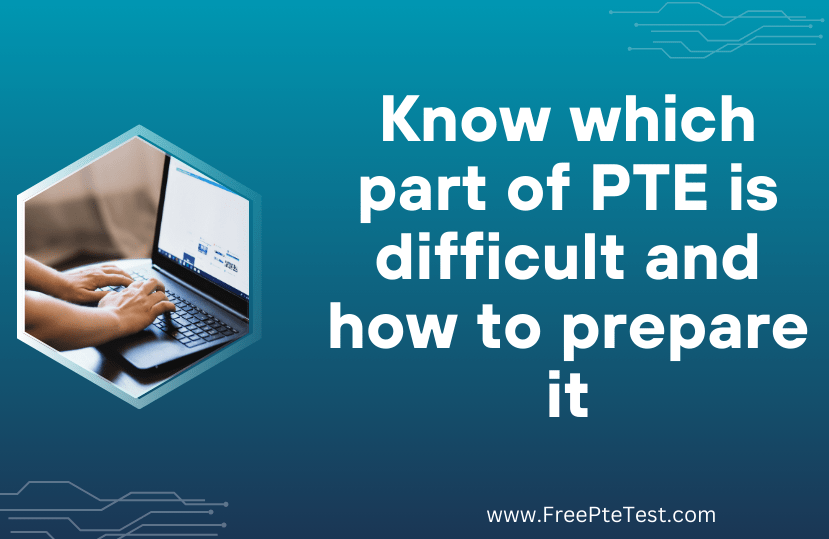The Pearson Test of English (PTE) is a widely recognized computer-based exam designed to assess English language proficiency. It is particularly relevant for those looking to study or immigrate to English-speaking countries. The PTE is divided into three main types: PTE Academic, PTE General, and PTE Academic Online.
Overview of PTE Exam Types
PTE Academic
- Purpose: Primarily for students seeking admission in universities and colleges.
- Structure: Comprises four sections—Speaking and Writing, Reading, and Listening.
- Duration: Approximately 3 hours, with a short optional break included.
- Scoring: Scores range from 10 to 90, with results typically available within 2 to 5 days.
PTE General
- Purpose: Designed for vocational purposes and general English proficiency.
- Structure: Divided into two sections—Writing and Speaking, assessing reading, listening, writing, and speaking abilities.
- Duration: Varies from 1 hour 15 minutes to 2 hours 55 minutes, depending on the level.
PTE Academic Online
- Purpose: Similar to PTE Academic but taken remotely.
- Structure: Same as the Academic version but not currently accepted for visa applications.
Difficulty Level
The difficulty of the PTE can vary based on individual strengths and weaknesses in language skills. Here are some insights into the perceived difficulty levels:
Speaking and Writing: This section is often considered less intimidating due to the Pte Automated Scoring System. Candidates who understand what the system evaluates tend to perform well.
Reading: Many students find this section challenging, primarily because it requires a good habit of reading and comprehension skills.
Listening: Generally viewed as equally challenging across both PTE and IELTS tests, requiring good auditory processing skills.
Overall, while some students find the PTE easier than other tests like IELTS due to its computer-based format and automated scoring, others may need help with specific sections depending on their preparation level and familiarity with English.
Registration Process
- PTE Academic: Registration is done online through the Pearson official website.
- PTE General: Registration typically occurs via test centers or through Edexcel Online.
Acceptance
- PTE Academic: Widely accepted by universities and colleges globally, including prestigious institutions in the UK and US. It is also recognized for visa applications in countries like Australia.
- PTE General: Accepted by various educational institutions but is not recognized for immigration purposes.
These distinctions help candidates choose the appropriate test based on their objectives, whether for academic pursuits or general English proficiency assessment.
The reading section of the PTE exam is the most difficult part for many test-takers. Statistics indicate that a significant number of candidates struggle to score well in this area, often missing points due to challenges related to reading comprehension and vocabulary usage.
Reasons for Difficulty
Complexity of Tasks: The Reading section includes various types of tasks, such as multiple-choice questions, fill-in-the-blanks, and reordering paragraphs, which require not only understanding the text but also effectively managing time.
Collocations: Many questions involve collocations, which can be tricky for candidates needing more English exposure in everyday contexts.
Impact on Writing: The Reading section also influences the Writing section, particularly through tasks like “Reading and Writing: Fill in the Blanks,” where errors can affect scores in both sections.
The Writing section is often considered the second most challenging after the Reading section. Candidates frequently encounter difficulties summarizing texts and crafting essays within a limited timeframe, which adds to the pressure.
Overall, while individual experiences may vary, the consensus among many test-takers is that Reading poses the greatest challenge in the PTE exam.
Improving scores in the PTE Reading section requires strategic preparation and effective test-taking techniques.
Effective Strategies for PTE Reading
Improving speed reading for the PTE exam involves combining techniques and consistent practice. Here are effective strategies to enhance your reading speed while maintaining comprehension:
Read Regularly
Engage in extensive reading across various genres, including newspapers, academic articles, and fiction. This practice enhances comprehension skills and vocabulary, making it easier to tackle different types of texts on the exam.
Focus on Keywords
Identify and highlight keywords in both the questions and passages. Keywords are crucial for understanding the text’s main ideas and for answering questions accurately.
Practice Time Management
Allocate your time wisely across all questions. Ensure you don’t spend too much time on any single question, which can hinder your ability to complete the section. Aim to spend about 2-3 minutes per question.
Use Grammar Clues
Leverage your knowledge of grammar to aid in answering questions, especially in fill-in-the-blank tasks. Understanding sentence structure can provide hints about the correct word choices or order of sentences.
Elimination Technique
For multiple-choice questions, use the elimination method to narrow down options. This increases your chances of selecting the correct answer, especially when you are unsure.
Read the Entire Passage First
Before attempting questions, read the entire passage to understand its main idea and context. This foundational knowledge will help you answer related questions more accurately.
Understand Different Question Types
Familiarize yourself with various question formats, such as multiple-choice, re-order paragraphs, and fill-in-the-blanks. Knowing what to expect can help you approach each question type more effectively.
Practice with Sample Tests
Take practice tests regularly under timed conditions to simulate the exam environment. This will help you become comfortable with the format and improve your reading speed and comprehension skills.
Review Answers If Time Permits
If you finish early, use any remaining time to review your answers. This can help catch mistakes or confirm your choices before submission.
Skimming and Scanning
- Skimming: Quickly read through the text to grasp the main ideas without focusing on every word. Look for headings, subheadings, and paragraphs’ first and last sentences.
- Scanning: Search for specific information or keywords within the text. This technique is especially useful for answering questions efficiently.
Chunking
Group words into meaningful phrases or chunks rather than reading word by word. Start with two to three words at a time and gradually increase the size of the chunks as you become more comfortable.
Use a Pointer
Use your finger or a pen to guide your eyes along the text. Creating a steady rhythm helps reduce distractions, maintain focus, and improve reading speed.
Expand Your Vocabulary
A broader vocabulary allows for quicker recognition of words, reducing time spent decoding unfamiliar terms. Read diverse materials regularly and create flashcards for new words.
Avoid Subvocalization
Minimize the habit of silently pronouncing each word in your mind as you read. Instead, focus on understanding the overall meaning of phrases, which can significantly increase your reading speed.
Practice Timed Reading
Take timed practice tests regularly to simulate exam conditions. Set a timer and challenge yourself to complete passages within the allotted time, which will help you develop a sense of urgency.
Eliminate Distractions
When practicing speed reading, create a quiet study environment free from interruptions. This will help you concentrate better on the text.
By consistently applying these strategies during your preparation, you can significantly enhance your reading speed and comprehension skills for the PTE exam, leading to better performance in the reading section.



